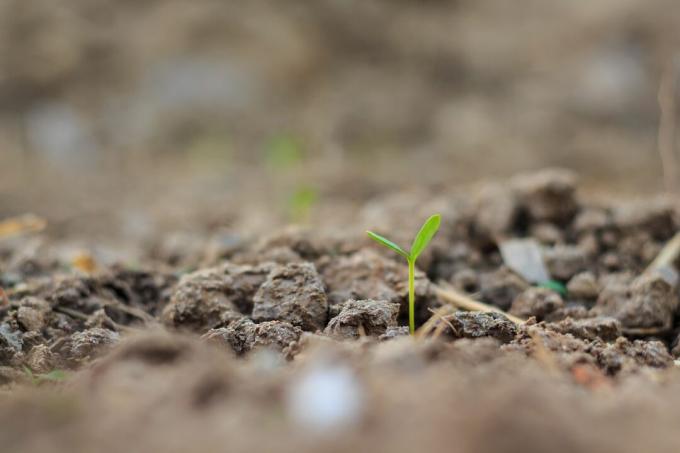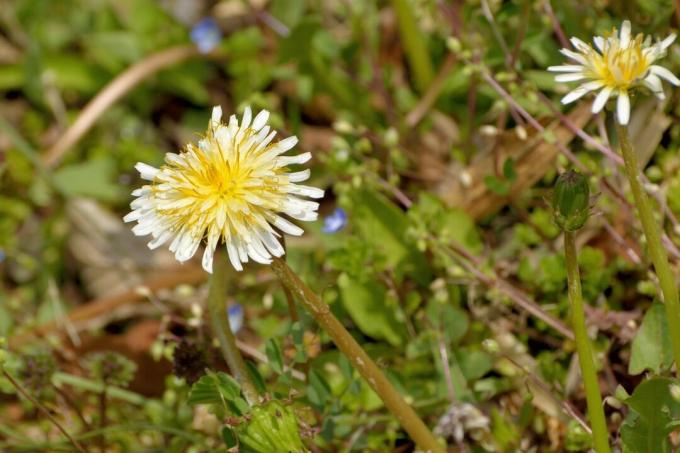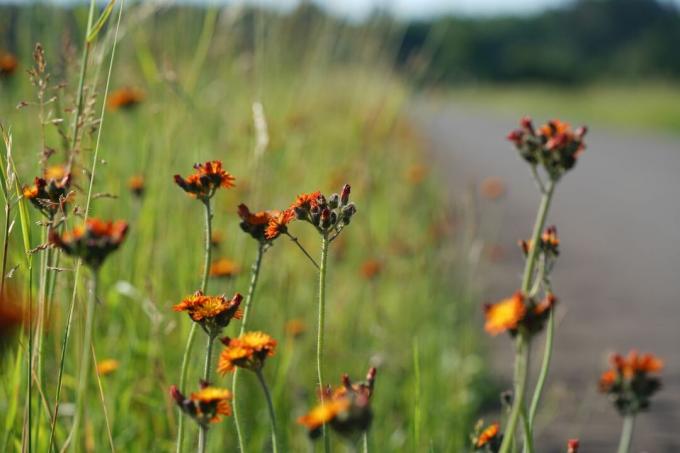Black box gardening is one of the new trends in gardening. But what is black box gardening all about? Why is this method worthwhile, how to operate it successfully and which plants can be used?

If the plant chooses its own location and you do little or no work in the garden, it has little to do with traditional gardening. We will show you the other type of garden philosophy - black box gardening - and explain how we and nature can benefit from it.
contents
-
What is black box gardening?
- Black Box Gardening: A Definition
- Benefits of black box gardening
- Disadvantages of black box gardening
- This is how you should proceed with black box gardening
- Suitable plants for black box gardening
What is black box gardening?
Black box gardening is a somewhat unconventional way of furnishing and designing the garden with plants. The word "black box" "Black box") comes from systems theory and means a closed, actually very complex system, which is only viewed from the outside and not explored inside.
A common saying related to this trend is "The gardener thinks, the plant directs."

Black Box Gardening: A Definition
Applied to the garden, the black box means the following: We see the plant community as a system that organizes itself, while we only act as initiators and observers. True, plants are introduced into the garden in advance, taking into account the site conditions. But which of these plants can survive and where they will spread - these decisions are not made by the gardener. They result from where the respective plants feel most comfortable. Self-seeding plants are the supporting element for the fact that the plants can change their location and thus "choose".
Of course, the framework conditions are also defined in advance in black box gardening - such as the bed sizes and the general layout of the garden. And of course, in contrast to a pure "black box" in the garden, it is always possible to intervene to regulate it. In the following, we will show you how black box gardening can be implemented in the garden.

Tip: Of course, you can also combine a classic garden with the black box gardening system. It is a good idea, for example, to form a “structural frame” out of trees and fill in the areas in between using the black box system.
Benefits of black box gardening
Gardening according to the black box system has some clear advantages:
- With black box gardening, little time is required, planting work and bed care within the system is largely eliminated.
- The costs of starting with such a garden system are comparatively low, since a lot of work is initially done with seeds.
- Even without a lot of plant knowledge, site-specific planting is ultimately possible, since the selection of the plants regulates itself based on the location.
- Native plants will also settle and multiply by themselves, which in turn supports the native insect world.
- The surviving plants are healthy, while plants unsuitable for the site are not artificially kept alive and disappear.
- There is an annual surprise, which plants appear again in the coming year or have even multiplied. This results in a continuous natural change in the garden.

Tip: The black box gardening principle can be applied particularly well to areas that are otherwise not used sensibly and cannot or should not be watered or mowed. Some therefore also refer to black box beds as "gap filler beds".
Disadvantages of black box gardening
But there are also some clear disadvantages with black box gardening:
- Black box gardening requires patience: Especially if you start with little plant knowledge, the garden could be a bit gappy in the first few years and looking sickly - until some thriving plants take hold or you get a happier hand planting seeds to have.
- The long waiting time until the finished black box garden is tempting to intervene earlier in the system - which only makes sense to a limited extent.
- Wild plants can be an enrichment, but also a nuisance. If they overgrow all other plants, you have to intervene to regulate them.
In the early stages, the garden will therefore still look a bit empty or untidy - but the reward for the long wait will be increasing year after year. A combination of planned and self-managing areas can sweeten this dry spell.

This is how you should proceed with black box gardening
Blackbox Gardening can be used when you are just laying out your garden or when you want to design areas differently and in a new way. Of course, it is also an interesting observation object and therefore something for gardeners who like to experiment. How to proceed:
- Analyze location: Is it dry, warm, humid, cold, sunny, shady, partially shaded? What type of soil is it? It might be worth it next to the Determination of soil type also the acidity of the soil to determine. Based on this information, plants and seeds can be selected to start with.
- create basic structures: Mark out beds, plant trees if necessary. Paths, hedges, stone walls or other fixed elements now find their place.
- prepare ground: Loosen open areas, add compost or mulch if necessary and remove unwanted plants such as overgrown weeds.

- plant choice: Select crops and seeds based on site conditions. In black box gardening, seeds are of particular importance. Annual summer flowers are possible, as are perennials and small shrubs. Many perennial and seed nurseries even offer black box starter packs for different locations. Ours are also a good start for a sunny area Plantura Premium Insect Pastures, which contain low flowering annuals and perennials. With the seed mixes you can provide food and shelter for bees, butterflies and beneficial insects.
- sowing: Place the plants and seeds in different places in the garden so that you can see where they grow best. Keep in mind, however, that some plants like to grow in groups, while others prefer to grow all by themselves.
Tip: It makes sense to mark the places where seeds were applied. This way you can later distinguish the germinating plants from weeds and don't accidentally tear them out.

- Care after sowing: Now it's time to water and wait. Some seeds may take longer to germinate - be careful not to overgrow them with unwanted weeds in the meantime. Beautiful and useful wild plants that you like can of course be given a place in the garden.
Suitable plants for black box gardening
Finally, we would like to introduce you to some plants that are suitable for black box gardening:
- columbine (Aquilegia spec.):Spreads quickly and the flowers are reminiscent of a fairy forest.

- hawkweed (Hieracium aurantiacum):Propagates also by runners; long flowering; endures long periods of drought.

- marigold (calendula): Must not be missing in a natural garden, because it diligently breeds and offers insects a rich buffet.
- hollyhocks (Alcea): The long flower stalks prefer a sheltered location.

- ornamental onion (Allium): Flower balls attract insects, propagation via bulbs.

One flower meadow sowing seeds is also a low-maintenance and natural way of laying out the garden. You can find out how to do this and which plants are also a good choice for insects in our special article.

